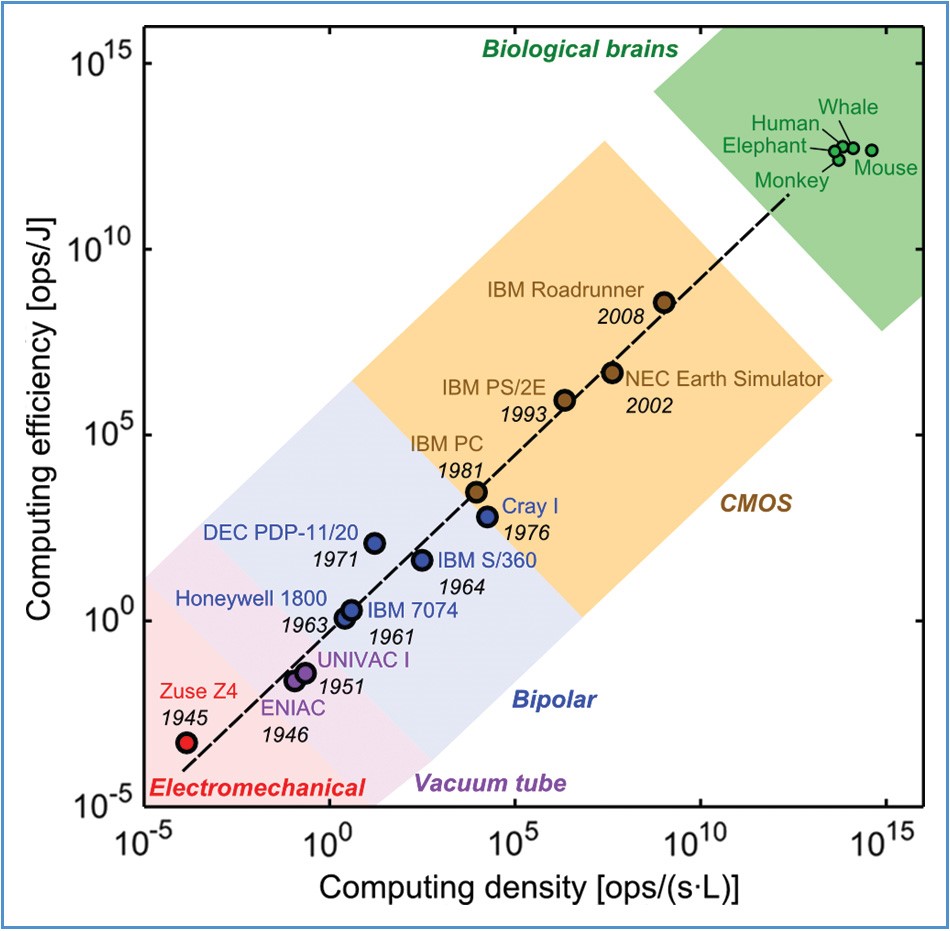
Hardware designers focused on computer science and electronics engineering will tell you that one of the biggest bottlenecks to advancement is density; how to cram increasingly powerful digital functionality into a finite volume of space while balancing power delivery and thermal energy.
The issue isn’t the lack of design efficacy, but of restrictive scaling caused by physical limitations. Sure one can vertically stack multiple high-end CPUs or GPUs and cool them with liquid, but at some point the system can longer dissipate the increasing thermal energy or provide the necessary power delivery to the pins of hard-to-reach chips. IBM has been researching a new technology that resolves both cooling and power delivery in vertically stacked electronics using something called “electronic blood.”
The end goal is to enable complete freedom when vertically stacking hardware by evenly distributing heat dissipation through a new cooling agent inspired by biological efficiency. Developed at IBM Research in Zurich, the electrochemical blood research is dubbed “5D” or “five dimensional-scaling,” not because of some underlying principles of quantum physics, but rather, to indicate power delivery and cooling; respectively the “fourth and fifth dimensions” of stacking three-dimensional hardware.

More importantly, the 5D blood leverages IBM’s research into microfluidic liquid cooling as a means of offsetting thermal energy in supercomputers. The resulting body of knowledge has spawned two “hot water cooled” supercomputers – SuperMUC at the Leibniz Supercomputing Center in Germany, and the ETH in Zurich. Now, if this same microfluidic liquid cooling could be scaled-down, it’ll drastically increase the level of cooling efficiency and cover all the hard-to-reach spots that are out-of-reach of the heatsink/water block.
Now, going back to biologically-inspired. In spite of how transistors shrink and how fast the interconnects become, they remain several orders of magnitude behind the computing efficiency to density ratio of animal brains. To illustrate, consider that some of world’s fastest supercomputers have the processing power equal to that of a small mammalian brain, but require 10,000,000 watts to power. By contrast, the human brain consumes about 20 watts of power.
A certain amount of the efficiency gap can be closed by neuromorphic chips and advances in CMOS logic, but these are limited. Reaching biological levels of efficiency requires that we find a way to stuff what basically boils down to millions of computer chips into the space of occupied by a human skull. “Electronic blood” will at least offset our heating and cooling situation.
Source: Ars Technica
Advertisement
Learn more about Electronic Products Magazine





